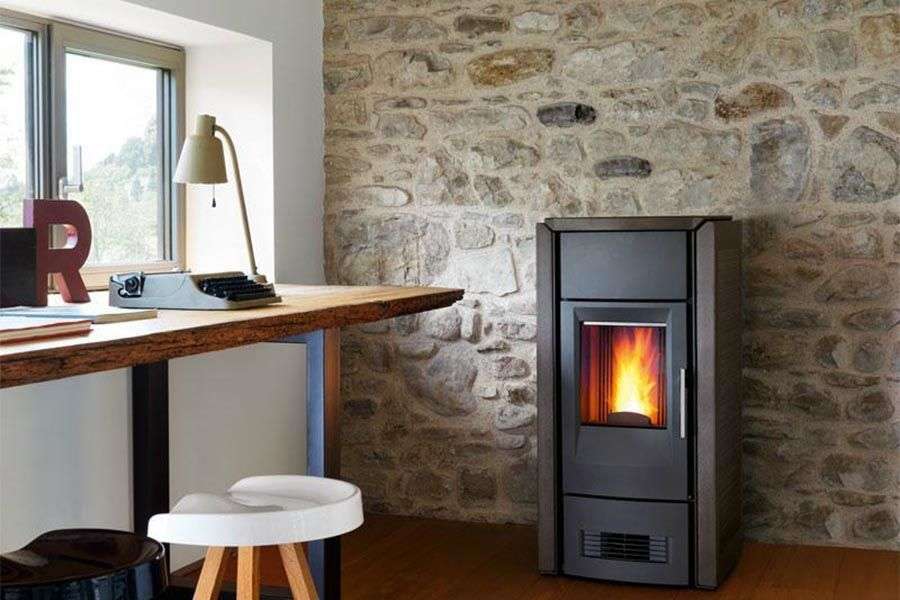
The biomass is a fuel to be taken into account for many reasons. One of them is its low impact on the environment, as well as being a much cheaper source of energy than others such as gas or electricity. A very efficient type of biomass is the pellet, which practically everyone knows, although they may not know how it works. In this article, we will focus on the characteristics of a pellet fireplace.
In today’s post on HotFireDoor, we will tell you what pellet stoves are like and their main advantages over other options. If you are considering buying one, read this post and you will be convinced that it is a great option for heating your home.
Contenidos:
Pellet stoves are eco-friendly
This is possibly one of the main advantages of these stoves, they are eco-friendly fireplaces. Pellets are made from pruning waste and other elements such as sawdust. They do not harm the environment because they use waste from the wood industry, such as large furniture manufacturers, and from the cleaning of forests and mountains. They are crushed and compressed to create something similar to the feed given to some animals.
The result is a clean fuel that also has very low CO2 emissions when burned, unlike fossil fuels.
Pellet stoves are cost-effective
Although the price of a pellet stove is slightly higher than an electric or gas stove, for example, the fuel it uses has high efficiency and costs less than others. With a 15-kilogram bag of pellets, which is normal in these cases, continuous heating can be achieved for between 7 hours and 2 days. Considering that sometimes it won’t be necessary to have the stove on all day, consumption will be even lower.
Pellet stoves are convenient
As much or more than electric stoves or gas stoves. These stoves have a hopper that is loaded with pellets and as it needs more, they are used to generate heat. So there is no need to worry about the fire losing intensity. Only check occasionally to make sure the hopper has enough material.
Additionally, they can be programmed to turn on or off at a specific time, or when a certain temperature is reached, and they will restart if the temperature drops. You can wake up and enjoy a warm and cozy home without the need to light the fire. The stove takes care of it by itself.
Easy to Install
Pellet stoves do not require construction work to be installed. All you need is a place to put the smoke outlet and a nearby power outlet to start it. They are often portable, so you can easily move the stove from one place to another without complications.
They are Safe Stoves
Since pellet stoves do not have direct contact with heat, they are quite safe, as long as necessary precautions are taken. There is also no danger of gas leakage or the accumulation of dangerous particles or residues in the environment.
As you can see, pellet stoves, like pellet fireplaces, are a very interesting option if you are looking to renovate your heating system.
Minimal Space Required
Pellet stoves stand out for their compact design and reduced size compared to traditional stoves, which allows them to easily adapt to small spaces or urban areas with space restrictions.
Unlike conventional fireplaces that require a more complex installation infrastructure and more space to store firewood, pellet stoves can be installed anywhere in the house, including living rooms, kitchens, or bedrooms.
In addition, pellet storage is much simpler, as they take up less space and can be stored in airtight bags, making transportation easier and reducing the need for extensive storage areas.
Some disadvantages of pellet stoves
- High initial investment: The cost of purchasing and installing a pellet stove may be higher than that of other traditional heating systems.
- Electricity dependency: These stoves require electricity to operate, which can be inconvenient in the event of power outages.
- Regular maintenance: Pellet stoves require periodic cleaning and maintenance to ensure optimal operation and prevent breakdowns.
- Pellet availability: In some geographical areas, access to pellets may be limited or more expensive, which can affect the system’s profitability.
- Noise: Some pellet stove models may generate some noise during operation, which can be annoying for some users.
- Aesthetics: Although there are modern and stylish models, some people may prefer the traditional appearance of a wood-burning fireplace.
- Fine particle emissions: Despite being more eco-friendly than conventional fireplaces, pellet stoves also emit fine particles, although in lesser amounts.



